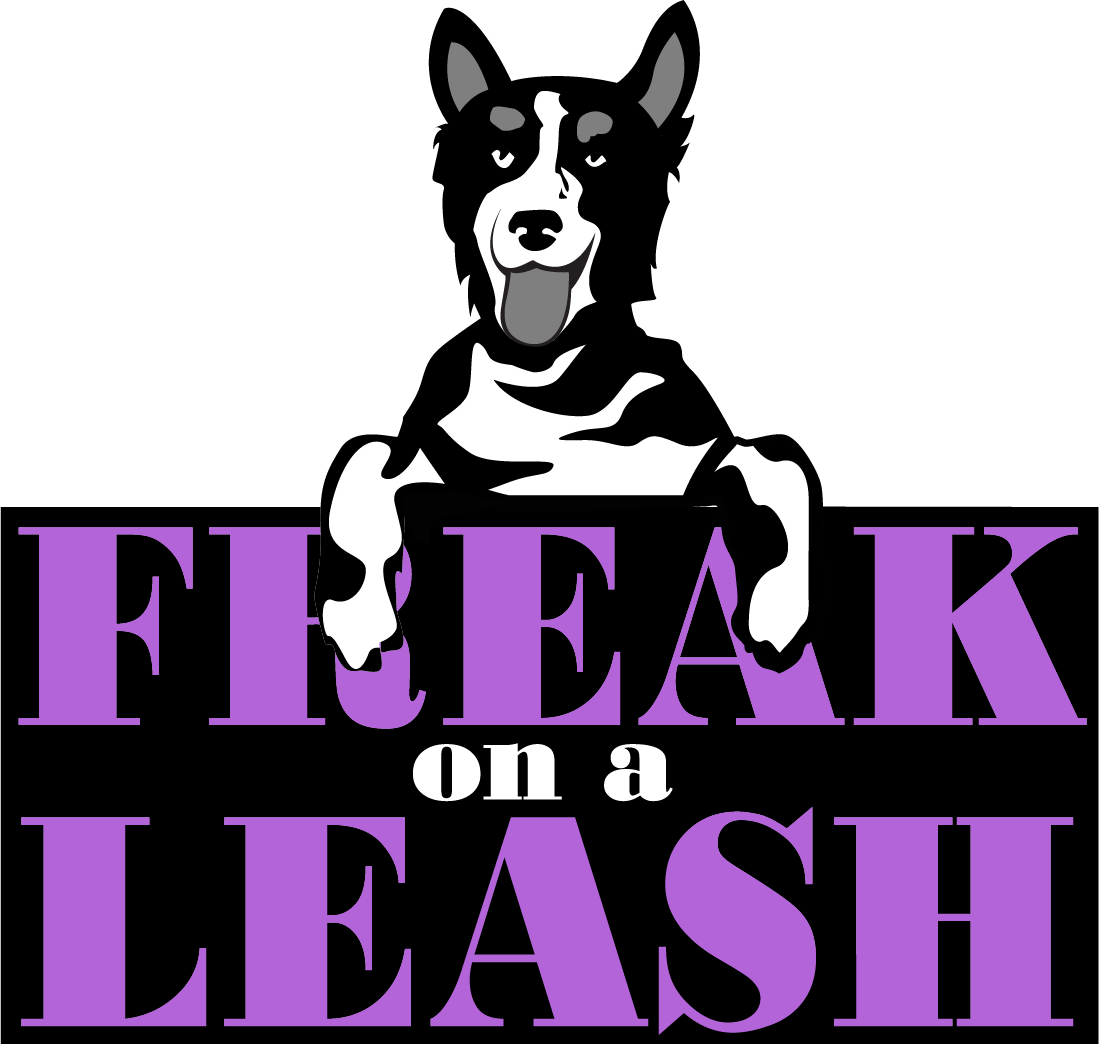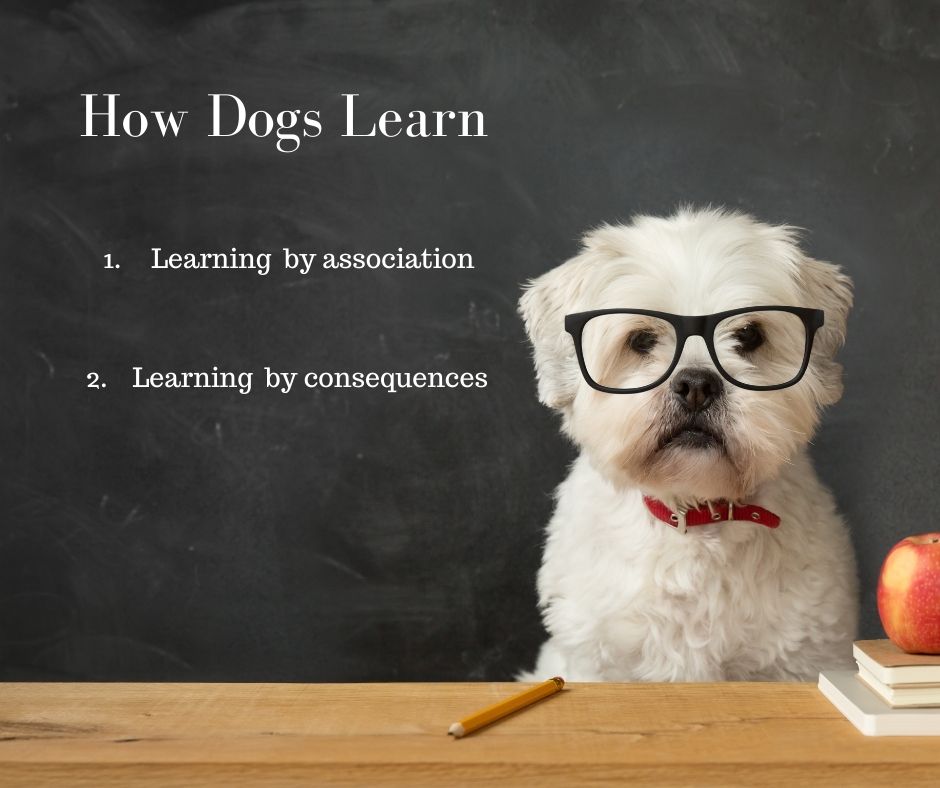
Introduction
At Freak on a Leash, we know that understanding the science behind canine learning is essential for effective training and shaping desired behaviors in dogs. Dogs are complex creatures with their own ways of interpreting the world. Understanding the nuances of their behavior and learning is key to their well-being. We believe in using science-backed methods, such as operant conditioning and classical conditioning, to reinforce positive behaviors and discourage unwanted ones.
Understanding How Dogs Learn
Canine learning is a complex process that involves a combination of cognitive abilities, genetics, and environmental factors. Dogs have the ability to learn through associative learning, which is connecting actions with outcomes. This process helps shape their habits over time. Understanding how dogs learn greatly enhances the effectiveness of training programs and helps ensure the well-being of our furry friends.
The Role of Genetics in Canine Behavior
Genetics plays a significant role in determining a dog’s behavior. Certain breeds may have inherent behavioral traits that can influence their learning abilities and response to training. For example, herding breeds may have a natural instinct to follow commands and learn quickly, while other breeds may have a more independent nature. Understanding the genetic predispositions of different breeds can help trainers tailor their approach and expectations when it comes to training and behavior modification.
The Impact of Environment on Learning
The environment in which a dog is raised and trained also plays a crucial role in learning and behavior. A positive and enriching environment can provide the necessary stimulation and opportunities for optimum learning and growth. On the other hand, a stressful or neglectful environment can significantly hinder a dog’s ability to learn and behave appropriately. By creating a conducive learning environment and utilizing proven learning theories, such as classical conditioning and operant conditioning, we can maximize the learning potential of our canine companions.
Key Theories of Canine Learning
There are several key theories of canine learning that trainers and dog owners should be familiar with. Associative learning is the process by which dogs connect actions with outcomes and learn through association. Operant conditioning focuses on reinforcing desired behaviors and discouraging unwanted ones through positive and negative reinforcement. Social learning involves dogs learning from observing and imitating the behaviors of other dogs or humans. These theories form the foundation of effective training methods and shape canine behavior.
Exploring Associative Learning in Dogs
Associative learning, also known as classical conditioning, is a powerful method of training dogs. This approach involves creating associations between stimuli and specific behaviors. Ivan Pavlov, a Russian physiologist, famously conducted experiments in the late 1800s where he conditioned dogs to associate the sound of a bell with the anticipation of food. Dogs are capable of making these associations, which can be used to shape their behavior and teach them to respond to specific cues.
The Principles of Operant Conditioning
Operant conditioning, developed by B.F. Skinner in the early 1900s, is another important theory of canine learning. This theory focuses on the consequences of behavior and how they influence future actions. Reinforcement, both positive and negative, is used to strengthen desired behaviors, while punishment (also positive and negative) is used to discourage unwanted behaviors. By employing the principles of operant conditioning, trainers can effectively shape canine behavior and promote positive learning outcomes.
Insights into Social Learning in Dogs
Social learning is a natural process for dogs, as they learn by observing and imitating the behaviors of other dogs or humans. Dogs have a strong sense of social hierarchy and are influenced by the actions of their pack members. This innate ability to learn from others can be harnessed in training programs to reinforce desired behaviors. Understanding dog psychology and utilizing social learning techniques can significantly enhance the effectiveness of training sessions and strengthen the bond between dogs and their people.
Practical Applications of Learning Theories in Dog Training
Understanding the key theories of canine learning is critical for the practical application of training methods. Positive reinforcement, such as rewards and praise, is a powerful tool for shaping desired behaviors in dogs. By utilizing effective training techniques and consistently reinforcing positive behaviors, we can encourage dogs to exhibit desired behaviors and diminish unwanted behaviors. Consistency and patience are key in training sessions to achieve long-lasting behavior changes in our canine companions.
Designing Effective Training Sessions
Designing effective training sessions requires careful planning and consideration of the individual dog’s needs and abilities. Here are some key factors to consider:
- Set clear training goals and objectives.
- Use positive reinforcement techniques, such as treats and praise, to reward desired behaviors.
- Break training sessions into short, focused intervals to maintain the dog’s attention and prevent fatigue.
- Vary the training exercises and incorporate fun and engaging activities to keep the dog motivated.
By following these guidelines, effective training sessions that promote learning and improve behavior will be created.
Positive Reinforcement and Its Benefits
Positive reinforcement is a cornerstone of effective dog training. This technique involves rewarding desired behaviors with treats, praise, or playtime, which reinforces the behavior and increases the likelihood of it being repeated. Positive reinforcement not only strengthens the bond between dog and human but also promotes a positive learning experience for the dog. By focusing on rewarding and reinforcing good behavior, desired behaviors in dogs can be shaped and a harmonious relationship based on trust and mutual respect will be created.
Avoiding Common Training Mistakes
When it comes to training dogs, it’s important to avoid common training mistakes that can hinder the learning process. Negative punishment, which involves taking away something the dog enjoys, and positive punishment, which involves adding an unpleasant stimulus, should be used sparingly and judiciously. Over-reliance on punishment can lead to fear and anxiety in dogs, hindering their ability to learn and respond to training. Instead, focusing on positive reinforcement and consistency will promote desired behaviors and minimize unwanted ones.
Advanced Concepts in Canine Learning
As we delve deeper into the science behind canine learning, we encounter advanced concepts that contribute to a deeper understanding of our four legged friends. Cognitive development explores how dogs process, store, and retrieve information, shaping their behaviors. Emotions also play a vital role in learning and training, as dogs experience emotions that can influence their behavior and responses to training. By incorporating these advanced concepts into training programs, trainers can further enhance the learning experience for dogs and achieve more profound behavior changes.
Understanding Canine Cognitive Development
Canine cognitive development refers to the process by which dogs acquire and refine their cognitive abilities. Dogs go through different learning stages, from early puppyhood to adulthood, during which their cognitive skills develop and mature. Understanding these stages and tailoring training methods to align with a dog’s cognitive abilities can optimize the learning process. Trainers and behavior consultants can give guidance on appropriate challenges and activities that stimulate the dog’s mental faculties, promoting cognitive development and facilitating effective learning.
The Role of Emotions in Learning and Training
Emotions play a significant role in a dog’s learning and training process. Dogs experience a range of emotions, including joy, fear, and anxiety, which can influence their behavior and response to training. Positive reinforcement techniques that create positive emotional associations with training sessions can enhance the learning experience and motivate dogs to engage in desired behaviors. On the other hand, negative emotions, such as fear or stress, can hinder the learning process and lead to undesirable behavior. Effective training should always prioritize creating a positive and supportive environment to ensure optimal learning outcomes for dogs.
Technology and Innovations in Dog Training
The field of dog training has witnessed significant advancements in technology and innovations in recent years. These advancements have revolutionized the way we train and interact with our canine companions. From wearable devices that track a dog’s activity levels and behavior to virtual training platforms that offer remote training sessions, technology has opened up new possibilities for trainers and dog owners. These innovations provide opportunities for enhanced learning and communication between dogs and humans, and will ultimately lead to more effective training outcomes.
The Use of Tech Tools for Enhanced Learning
Tech tools have become invaluable assets in the field of dog training, offering enhanced learning experiences for dogs and trainers alike. Harnessing the power of technology, trainers tools such as clickers, automatic treat dispensers, and interactive toys can be used to reinforce desired behaviors and create engaging training sessions. These tech tools provide immediate feedback, which can promote learning desired behaviors more effectively. Incorporating these tools into training methods can enhance the learning process and promote better communication between people and dogs.
Virtual Training: Opportunities and Limitations
Virtual training has emerged as a popular option in dog training, offering convenience and accessibility for both trainers and dog owners. With virtual training platforms, dog trainers can now provide remote training sessions and guidance to dog owners anywhere. This opens up opportunities for individuals who may not have access to local training resources. However, virtual training also has its limitations, and may not be suitable for all dogs or training scenarios. It is important for trainers and dog owners to carefully assess whether virtual training is the right fit for their specific needs and seek professional guidance when necessary.
Conclusion
Understanding the intricacies of canine learning is essential for effective training and fostering a strong bond with your canine companion. By delving into the role of genetics, environment, and learning theories like association learning and operant conditioning, training sessions can be tailored to suit each dog’s individual needs. Utilizing positive reinforcement techniques while avoiding common training mistakes is pivotal for successful outcomes. Moreover, exploring advanced concepts such as cognitive development and emotional influences will enrich any approach to canine learning. With the aid of technology and innovative tools, modern dog training has evolved, offering opportunities that can enhance the training experience. By adapting to your dog’s learning style and patiently guiding them, you can pave the way to a harmonious relationship built on trust and understanding.
Frequently Asked Questions
What is the best age to start training my dog?
The best time to start training your dog is when they are a puppy. Puppies have a natural curiosity and eagerness to learn, making it an ideal time to introduce them to basic obedience training. Training should be done in short, positive sessions throughout the day to keep their attention and make learning a fun experience.
How can I teach my dog to listen under distractions?
Teaching a dog to listen under distractions requires patience and consistent training techniques. Start by gradually introducing distractions during training sessions and rewarding your dog for maintaining focus and following your cues. Use known cues to redirect your dog’s attention and reinforce the desired behavior of listening and responding to you.
Are some breeds easier to train than others?
While some breeds may have certain traits that make them more receptive to training, all dogs are capable of learning. Each breed may have its own unique characteristics and learning style, making it important to look at each dog as an individual and adapt training methods to suit their specific needs. Regardless of breed, consistency, positive reinforcement, and an understanding of the psychology of dogs are key factors in successful training.

